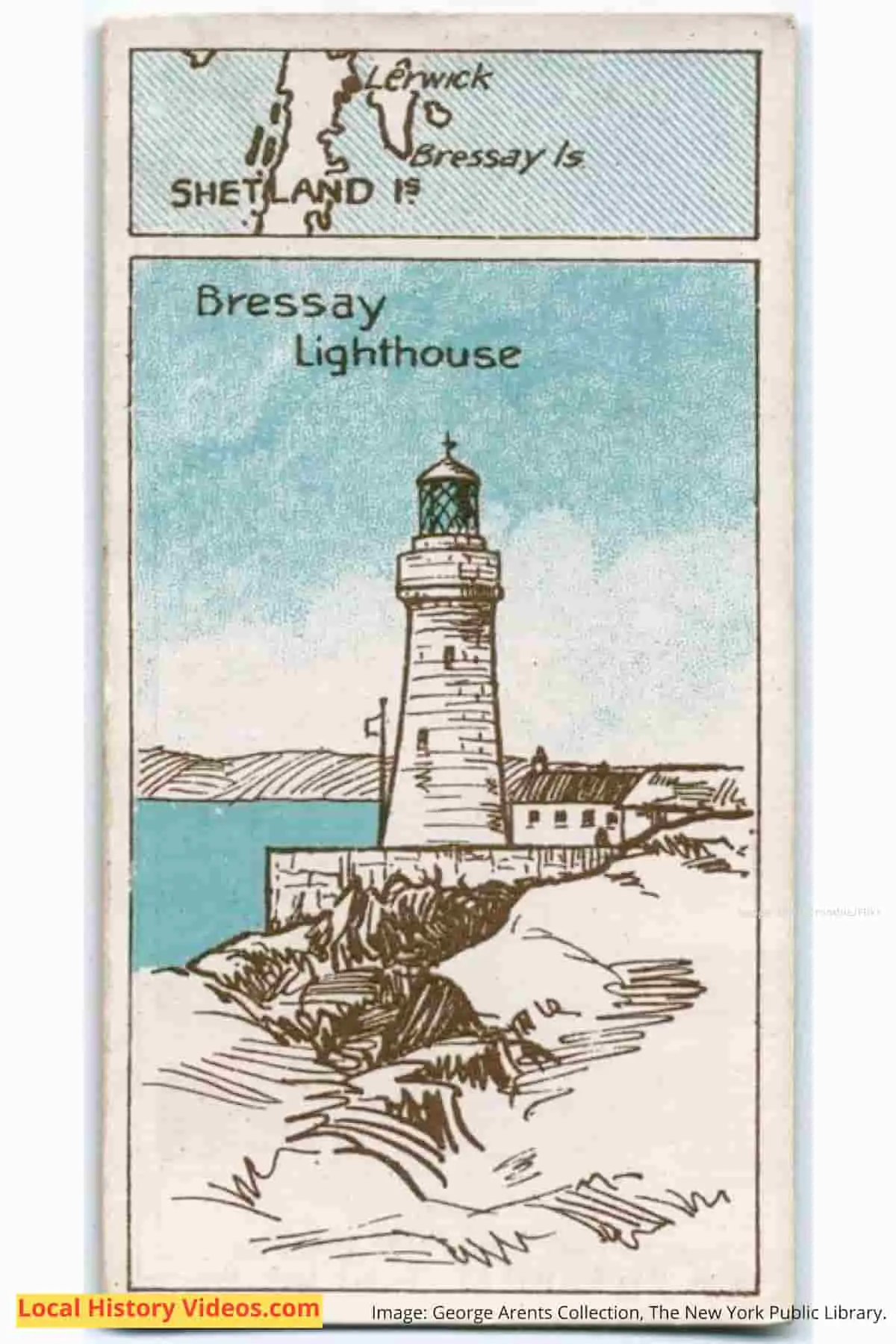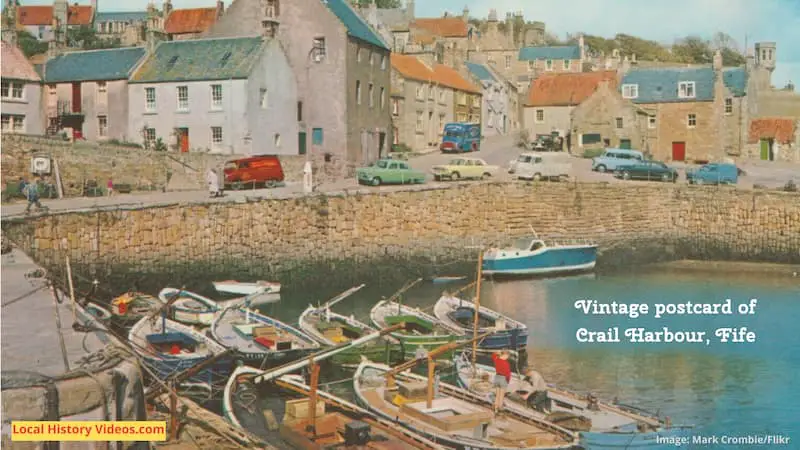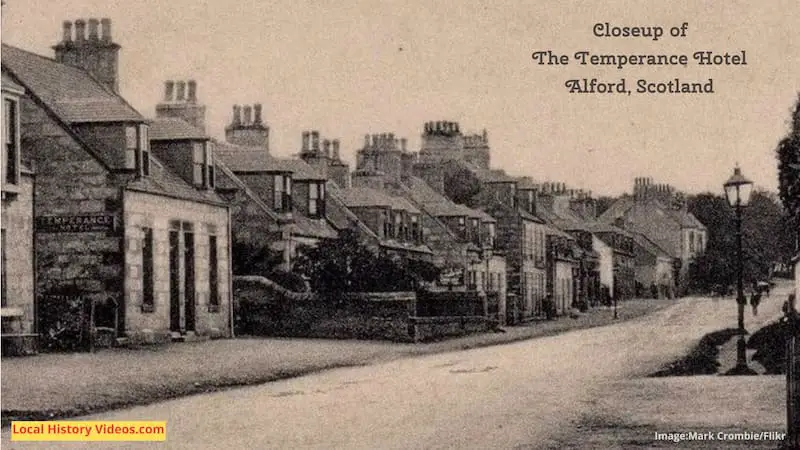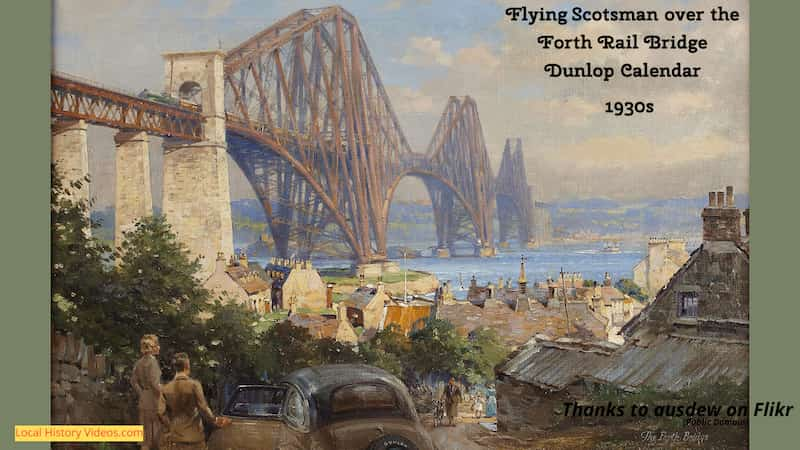Glimpse history through old images of Bressay, one of the inhabited islands of the Shetland Islands in Scotland.
Old Photographs Of Bressay Shetland Islands Scotland: Tourscotland (YouTube)
A Bit of Bressay History
Extract from:
“The New Statistical Account of Scotland: Sutherland, Caithness, Orkney, Shetland, General index”
Published in 1845
Pages 10 – 19
Bressay has a dozen of small lochs, two or three of them only being half a mile in length or breadth, but some containing excellent trout, seldom disturbed by the angler. Burra and Quarff have each two small lochs.
Geology.
Bressay and Noss belong to the old red sandstone formation Quarff to the clay-slate and mica-slate formations; the Isles of House, Burra, and Hevera are of primitive formation; and Papa of epidotic syenite.
Quarries of coarse slate, of a grey, heavy kind, have been for a long time wrought in Bressay, the layers being from four to ten feet deep, mostly imbedded between rocks of sandstone. Some inferior kinds of limestone are found in Quarff and in Burra.
Zoology.
The headland of the Ord of Bressay affords a domicile to a few eagles.
The Noop of Noss, in summer, exhibits a curious spectacle, being covered with birds of passage and others, which occupy the narrow shelving of the rock. The noise of these creatures is occasionally like that of the most deafening waterfall.
Whales are sometimes seen in the Sounds. One above forty feet long was lately brought ashore near the manse, said to be the species Balana boops.
Although there are few trees here in the present day, yet there must have been a time when they did exist in it, as many of the ipsa corpora are found in the mosses here, as in other places of the country.
It can hardly be said that any experiments in planting made in this country have been made with such energy, that their failure should be held decisive. Several spots near the mansion-house were, some years ago, planted with willows and ash. The plants of ash are not in the same state of progress as the willows. Some plane trees thrive tolerably. In the ground adjoining to the mansion-house, there are various plants of aspen, poplar, laburnum, elm, and plane-tree thriving well. The climate does not appear to favour evergreens.
Culinary vegetables thrive well; and gooseberry and curran bushes produce tolerably, but require the shelter of a wall.
There have been often at the Mansion-house tolerable crops of strawberries. There is not, so far as I have heard, any instance of a hot-house in this country, except here; and in it the vines produce an exuberant crop of large grapes.
II. CIVIL HISTORY.
In the year 1636, the Rev. William Umphray, who had been at that time fifty-five years minister of this charge, executed two deeds of mortification, by which he left eight merks of land to Burra and Quarff, and four to Bressay, for maintaining a reader, and other pious uses, together with the interest of L.20 Sterling to the one, and of L. 150 Scots to the other.
The communion cups seem to have been his gift, as they bear his name, with the date 1628.
An event of great importance to the minister and people lately took place, in the erection of a Government church in Quarff.
Before this erection, the charge of these parishes was one of the most difficult kind, the Bressa and Burra churches being about twelve miles distant from each other; and it behoved the minister to go in a very small boat to Quarff, then to walk two miles, and lastly, to embark with his Quarff parishioners for the kirk of Burra, situated at five miles distance. His Sabbath days’ journies thus occupied eight hours, before his return home. The arrangement of places so distant under one charge, rendered it impossible for one man to go through the duties of a minister in them, with any regularity or satisfaction.
Its first minister, Mr James Gardner, was inducted September 1830. The district at present allotted to him consists of Quarff, with the adjacent islands in Burra parish; and he has the duty of preaching in the Burra church, as circumstances may permit. But as there are contiguous parts of Coningsburgh, Gulberwick, and Tingwall, for whose inhabitants it is vastly easier to attend at Quarff than at their own parish churches, the Presbytery have it in contemplation to annex, quoad sacra, these contiguous places to the charge of Quarff. It is much to be wished, for the sake of order, and the comfort of all concerned, that the whole were con- stituted a separate parish.
The ground required for the church and manse, was generously given by the late Charles Ogilvy, Esq. of Seafield, and the disposition executed by his son, John Ogilvy, Esq.
The Bressay bell declares, in Latin, that it was cast, in 1723, at Hamburgh, for the use of this kirk.
Land-owners.
The land-owners are, in Bressa and Noss, William Mouat, Esq. In Quarff, the Right Honourable Lord Dundas; John Ogilvy, Esq.; Mr Andrew Irvine; and Mr Thomas. Henry. In Burra, John Scott, Esq. of Scalloway. In Hevera, Robert Bruce, Esq. of Symbister.
For time immemorial, separate sessions have been held at the kirks of Bressay and Burra; and it is probable that a volume or volumes of minutes and registers have been lost, at both places. The first extant are in the worst condition, and much mutilated; the earliest date 1737. They are now better kept; and it is found expedient to have a separate book and register at Quarff.
In Noss, a small burying-ground is used, lying round the fragments of what appears to have been a Popish chapel.
There are three burying-grounds in Bressay. The most ancient appears to have been at Gunista, on the north part of it. There is here a small fragment of a church, which seems to have had vaults below it, or, according to tradition, a prison attached to it.
On the site of this church, a spacious tomb of hewn stone, and neat workmanship, was built by some former proprietor, the walls of which remain.
The ruins of a church appear also at Culbinsgarth, on the north-east, where there is another burying-ground; and from this place Mr Umphray’s deeds of mortification are dated. How long before this the manse and kirk had subsisted, does not appear; but they were both removed to the present site, on the west, in 1722; and since that time, the church has been renewed once, and the manse twice.
Several traces of Pictish buildings occur, mostly in the form of subterranean cells; and both in Bressay and Burra, are some of these objects called standing-stones.
Of late years, some tumuli were discovered, containing square stones, within which were bones, exhibiting marks of combustion.
Other conically shaped knolls, that have every appearance of being tumuli, have never yet been opened.
The churches in Bressay and Burra are small and incommodious. The Government Church in Quarff is a commodious and beautiful building.
III-POPULATION.
- 1801 – 1300
- 1811 – 1411
- 1821 – 1585
- 1831 – 1699
One family only of independent fortune resides in the parish, and this in Bressay, only during summer.
IV. INDUSTRY.
Agriculture.
Measurement by acres is here unknown, and that by mark land, which has been used for time immemorial, is, and has been, for many years, ill defined and arbitrary.
Originally, a mark of land must have been a definite measure, and probably a measure only of cultivated land. But as every small farm has a portion of pasture or uncultivated ground belonging to it, an industrious tenant does what he can to add to the cultivated space as much as he can spare from the pasture.
In some places, a mark signifies a space equal to an acre, and in others only to half an acre.
Certainly it would be far better, in order to prevent erroneous calculations and disappointments, that farms in this country were measured precisely by acres as in the south.
In this and most parishes here, the cultivated land is often not a third, or a fourth, or not nearly so much of the waste land or undivided common. The rental land, or that which has been in cultivation from olden times, consists in
- Bressay and Noss, of 312 marks.
- Burra, 252
- Hevera, 18
- Quarff, 93
Rent.
The average rent of land in the three districts is L. 1 per mark, with public burdens. But perhaps the outsets, or small farms occasionally let from the common, may make the cultivated space amount to a third more than what has been stated.
The rental land connected with any hamlet or township, as it is called, lies in run-rig among the tenants. The outsets lying by themselves and unfettered by the system of run-rig, and being some-times enclosed, possess by these means greater facilities for im-provement than the other.
Husbandry.
The mode of cropping, from time immemorial, has been by oats and bear alternately on the infield, with potatoes once in four or five years.
The manure employed is a compost of moss earth, dung, and sea-weed; the earth being taken from the common during summer, and mixed with the dung as it accumulates, and with the sea-weed as it casts up.
The offals of herring are also considered an excellent manure.
A good many years ago, the proprietor of Bressay brought a grieve from Berwickshire to manage the farm annexed to the mansion-house, who afterwards took the lease of a small farm and managed it by the same mode of agriculture to which he had been accustomed in the south; it was found that it seldom failed to produce an average crop of grain, turnip, rye-grass, or clover, compared with any hill district in Scotland.
One or two tenants possessing advantages above the rest, availed themselves of the example thus set. But as to the generality, their poverty, and the want of leases, enclosures and roads, together with the system of run-rig, effectually bar all attempts at improvement.
Other obstacles, however, arise from their engagements in fishing, and from the circumstance that the young men of almost every family, in the months of February and March, run eagerly to Lerwick to engage in the Greenland and Strait’s fisheries, and, of late years, to the cod-fishing; so that, both in spring and harvest, a great part of agricultural labour devolves on the females.
But even many of the men who remain at home, think nothing of deserting their farms for a whole day, now and then, for the sake of any traffic with ships in the harbour.
Of course, from these circumstances alone, much agricultural improvement is not to be expected.
Two or three leases only exist here, the duration of which is from nineteen to twenty-five years.
Many of the farm cottages have of late years been rebuilt on an improved plan, and emulation has been excited on this matter.
It should be mentioned, that the best cultivated farms may produce 5 or 6 bolls of oats, and 8 bolls of bear to the proportion of an acre, or 200 ankers of potatoes.
It is seldom that meal is sold; but when this happens, it is sold by the lispund, a foreign measure at present very variously defined.
The average price of oatmeal in Bressay is 4s., and of bear meal 3s., reckoning to the lispund 36 lbs. of 16 ounces. Potatoes are sold at 8d. per anker.
Rate of Wages, &c.
Labourers’ wages from 10d. to 1s. 6d. ; masons, from Is. 4d. to 3s.; carpenters, 3s. ; journeymen, 2s.; quarrying and building dry stone dikes per fathom, 2s. 6d.; wages of a housemaid per annum, L.2; of a farm female servant, L.1.
Summer’s grazing of a cow, from 7s. to 10s.; of an ox, 15s to L.1; winter’s fodder, from 5s. to 7s.
Price of a full-grown wedder, 7s.; of an ewe, 5s.
The average weight of a cow for slaughter is about two cwt., of an ox about six years old, about three cwt. The sheep are, in general, left to run at large on the common.
The weight of one fleece may be from one to two or three pounds.
Quarries.
Stone quarries for the purpose of building may be here found almost in any place. Slate and flag is shipped from the quarries in Bressay, for the different parts of this country, and on some occasions is carried to the southern coasts.
In these quarries, a dozen of men and boys are employed, at wages of 10d. or 1s. a day.
Fisheries.
The ling-fishing is called the haaf or far-fishing. Bressay sends to it thirteen or more boats, 18 or 20 feet in keel; Quarff, four ditto; Burra, ten, of 15 feet keel. Of the largest of these, each boat carries fifty bughts or lines, each bught being fifty fathoms in length.
The expense of outfit of one of these boats, may be from L.20 to L.26. In each, there are commonly six sharers; but if a man is needed to complete the crew, he may be hired sometimes for L.1, 10s., or a sum between that and L.3. A haaf boat may be hired for the season for L.2, 8s.
On this fishing, the Bressay and Quarff people have to proceed far to the eastward, sometimes till they lose sight of land.
The Quarff people have to leave their homes during the week, and to lodge at Noss as a fishing station, where others also, from different parishes, are collected, and have a few shillings to pay for the use of the huts in which they are accommodated; those from Bressay set off from their own homes.
Both of these, and also all who fish to the eastward, must be at open sea at least for one, sometimes for two nights.
The Burra people do not need to go farther out to sea than one mile, their lines being set in the evening, and drawn ontheir return in the morning.
From their employers they receive at present 6s. 6d. for the cwt. of wet ling, and 4s. 6d. for the tusk and cod, which they bring from this fishing.
The accounts I have received of the fishermen’s profits differ somewhat. A gentleman, whose knowledge ought to be accurate, stated to me from his books, that the average profit of each man for the season was from L. 4 to L. 5. The ave- rage amount of the Bressay ling-fishing may be about seventy cwt. in a season to each boat. Of the Quarf fishing, fifty cwt. Of the Burra fishing, eighteen cwt.
The cod-fishing to the west and south-west of this country employs many hands, and begins about Whitsunday; being carried on by small sloops of between fifteen and twenty tons.
From the whole of this parish, six or more sloops of this kind are sent to it, and last year, there were about seventy of the parishioners who engaged in it. Eight or ten men commonly are partners in a sloop; but sometimes boys are hired to make up their complement, whose wages may be L. 2, and Is. 6d. per ton of fish. These sloops may get in a season from four to ten tons.
The herring-fishery commences at the conclusion of the former, in the month of August. The same persons mostly engage in this as the two former, and the boats used for the ling fishing are employed by them, along with some of a larger size, by others who have prepared them for the purpose.
The ordinary kind of boats must be provided with nets, the expense of which is about L.22. Some, however, make their outlay only L. 6 or L. 7.
They need only to go on this fishing, two or four miles from land.
Last year, the Bressay boats alone got 1528 crans, the average being seventy six to each boat. The Quarff boats got 390 crans. The Burra men had not yet engaged in this fishing.
The curing of herring in Bressay employs about thirty women and children in the season.
The manufacture of kelp in Bressay employs twenty or thirty boys and girls, who receive 9s. or more in the month, and have to work at least three hours every tide, by day or night.
An over-seer is employed, who receives at the rate of L. 2 per ton for his own wages and payment of the workers.
The manufacture of Shetland hosiery is carried on by the industrious, although it has not so much encouragement as in the days of Provost Coulter.
The manufacture of herring-nets now engages attention, and promises to be a useful employment.
V.-PAROCHIAL ECONOMY
Ecclesiastical State.
The Bressay church is situated conveniently, and so is the Government church in Quarff.
Not so the Burra church. Situated near the south extremity of the West Isle, it caused intolerable hardships to the minister and half of the parishioners; and still gives needless travel to the Government minister in Quarff.
Bressay church was built in 1815; is in good repair; accommodates 370; has no free sittings.
The Government church in Quarff was finished in 1829; is a beautiful and commodious building built to contain 320; has 106 free sittings.
Burra church was built about twenty-six years ago; accommodates 210; has no
free sittings; and is seldom in any tolerable state of repair.
The manse at Bressay was rebuilt in 1819. The glebe was ex-changed twelve years ago, for one to which it was thought equal in value; it is said to contain twelve marks of land, and, according to present rents here, would let for L. 12. The stipend is L.150, of which L.117, 17s. 10d. arise from the parish.
There are two places called meeting-houses in Burra that may, perhaps, each contain 100; one of Independents, and the others Wesleyans.
I am told that twenty or thirty only are in communion with either. Many of them, when their hours of meeting differ, attend the parish church. Two or three individuals only at particular times have appeared as Dissenters in Quarff or Bressay.
The three parish churches in summer are well attended. Certainly those of Bressay and Burra are not too large for the population.
The situation of young persons here, all along, has been quite deplorable. Till lately, they had no opportunity of anything deserving the name of education; and even, though there had been anxiety shown to bring them to church, there was not, and there is not, room for the tenth part of them either in Bressay or Burra churches. The average number of communicants in Bressay is 290. When there was only one church for the west district, there might be there 150. But, since the erection of the Government church, arrangements not having been completed between Quarff and Burra, and the contiguous parts, the number of communicants cannot be accurately specified.
Education.
There are three regular, and commonly four small private, schools in these parishes.
The parish school is in Bressay. The salary is L. 25, 13s.; amount of fees, L. 1, 6s.; quarter payments for reading, 10d.; writing, 2s.; arithmetic, 2s. 6d. ; a set of book-keeping, 3s. At last examination, there were 25 scholars present.
The Assembly schoolmaster in Bressay has L. 20 of salary; amount of fees at present L.9.
A school is supported by the Society for Propagating Christian Knowledge, in Burra. The salary L.15; amount of school-fees, L.1. Rate of quarter pay- ments, for reading, 10d.; writing, 1s. 4d.; arithmetic, 2s. 6d. Number of scholars at present, 26.
For more than twenty years, there have been two schools in Bressa, and one in Burra, taught by women, having each 15 or more scholars. That in Burra, and one of those in Bressay, are extremely useful for the younger children.
Sabbath schools are kept by the Assembly and Society teachers, and one in Quarff, by a catechist of the Edinburgh Society for Promoting Religious Knowledge among the Poor. One in Bressay is kept by an elder.
Almost all who can get to school between eight and fifteen years of age, are now beginning to read, and a greater proportion than before to write.
Upwards of fifteen years of age there are at least twenty who, confessedly, cannot read. I believe that not more than twenty or thirty are capable of the smallest epistolary correspondence.
The institution of the Assembly school has excited a desire for education in Bressay beyond what existed before, and the people appear sensible of the great advantage of having a teacher so well qualified as the present.
The district of Quarff remains wholly destitute of a teacher, and there a school is loudly called for.
Friendly Society.
In this parish, there is a branch of the Shetland Fishermen’s Fund, for decayed fishermen and their widows.
The annual payment, 2s. and a little entry money at first.
In this parish, there are 46 contributors; 18 widows at present, who receive each 14s. ; six decayed members, who, altogether, receive L. 1, 14s. 6d.
The nett stock of the general fund is at present, L. 2485, 16s. 74d.
Its concerns are diligently superintended by William Mouat, Esq., the general treasurer.
This excellent institution would have prospered much more, had it not been for some unfounded prejudices fostered among the peasantry.
Poor.
Bressay.
Average of yearly collections, Rent of mortified land,
L. 12 11 7 4 4 0 0 13 6
Interest of mortified money, On the poor’s roll are 32 persons at present, who receive at an average each only 8s. yearly. Temporary supplies and funeral charges amount commonly to L. 2.
Burra and Quarff.
Average of yearly collections, Rent of mortified land,
L.9 0 0
400 300
Interest on a bill and account, variable, at an average, But it is sometimes necessary to draw small sums besides, from the money in account.
Poor on the roll, 25, receiving altogether L. 8, 6s. Occasional supplies, 19s.
The mortified land in Burra ought to yield at least double what it does. But for nearly a hundred years, various causes have contributed to render this spot of ground of no avail for the pious and charitable purposes of the mortifier.
It must be evident, that, if the distressed poor did not receive some supply from relatives and neighbours, they could not live on the miserable alms the session has to give them.
In Bressay, they receive much kind and exemplary beneficence from the family of the heritor.
Fuel.
The fuel in general use is peat, although coal may be obtained by trading vessels.
Revised May 1841.
Source: The New Statistical Account of Scotland: Sutherland, Caithness, Orkney, Shetland, General index
More about Scotland
- Old Images of Fife, Scotland
- Old Images of the Edinburgh Festival
- Old images of Dunnottar Castle, Aberdeenshire
- Old images of Crathie Kirk, Aberdeenshire
- Old Photographs of Bieldside, Aberdeen
- Old images of Isle of Lewis, Outer Hebrides
- Old images of Cairnburg, Scotland
- Old images of Broadsea, Scotland
- Old images of Braemar, Scotland
- Old images of Banff, Scotland
- Old images of Banchory, Scotland
- Old images of Ballater, Scotland
- Old Images of Auchenblae, Scotland
- Old Images of Alford, Scotland
- Old Photos of Aboyne, Aberdeenshire
- Old images of Edinburgh, Scotland
- Old Images of Cellardyke
- Old Images of the Forth Bridge at Queensferry
- Old images of Dinnet in Aberdeenshire
- Old Images of Crovie, Scotland







